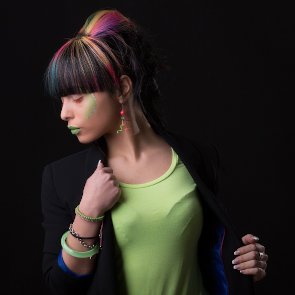4 Ingredients to Avoid If You Have Color-Treated Hair
 Color-treated hair needs special care because permanent and semi-permanent hair dyes, even those claiming to be delicate, can make your hair more brittle and strip it of natural protection. Besides, some shampoos can wash out the pigment, making your hair color fade faster. That’s why people who regularly dye their hair pay special attention to the ingredient lists of the hair care products they buy. Here are 4 ingredients that you should avoid if you have color-treated hair.
Color-treated hair needs special care because permanent and semi-permanent hair dyes, even those claiming to be delicate, can make your hair more brittle and strip it of natural protection. Besides, some shampoos can wash out the pigment, making your hair color fade faster. That’s why people who regularly dye their hair pay special attention to the ingredient lists of the hair care products they buy. Here are 4 ingredients that you should avoid if you have color-treated hair.Sulfates
Absolutely all shampoos contain detergent ingredients that are responsible for their foaming and cleansing properties. They can be found near the top of the ingredient list, right after water. The most commonly used detergents include sodium laureth sulfate (SLES) and ammonium laureth sulfate. They are popular because they’re cheap and effective.
However, their great detergent properties are what makes them bad for color-treated hair. The thing is, sulfates strip the pigment molecules from your hair, making it fade faster. If you want to keep your hair vibrant and glossy, you should avoid shampoos with sulfates, especially those labeled as clarifying, purifying or deep cleansing.
Check this out: 5 Ingredients to Avoid in Shampoos
Silicones
Silicones, such as dimethicone and cyclomethicone, are often found in shampoos and hair conditioners due to their ability to coat hair shafts, making them appear smoother and shinier. They do make the hair look healthier and they aren’t exactly harmful, but there is at least one drawback that you need to be aware of. Silicones are hard to rinse off, especially when you have to rely on sulfate-free shampoos. So they stay on your hair, causing product build-up and making the hair appear greasy and dull.
The bottom line is, the only type of silicone-containing products you can use is heat protection styling products that are only applied to the ends of the hair. Other silicone-containing products, such as shampoos and hair conditioners, should better be avoided.
Check this out: How to Make Your Hair Look Shinier
Chlorine
Well, we realize that chlorine isn’t a cosmetic ingredient, but it is one of the reasons why color-treated hair fades faster. Your hair can come in contact with chlorine in a swimming pool, where water is chlorinated for disinfection purposes. Besides, in some cities chlorine is added to tap water, also as a means of disinfection. When you swim in a pool without a cap or wash your hair with chlorinated water, it opens up the hair cuticle and strips pigment from your hair.
To protect your hair from chlorine damage, you should always put on a swim cap entering the pool. To remove chlorine from your hair, wash it with a color-safe shampoo and clean, unchlorinated water. You should also check out chlorine-removal sprays that are sold by some athletic stores.
Check this out: 5 Things That Can Make Your Hair Color Fade
Lemon Juice and Apple Cider Vinegar
Apple cider vinegar and lemon juice are two natural ingredients that are often used in homemade hair rinses because they are thought to remove product build-up, balance oil production in the scalp, and promote hair shine and gloss. Unfortunately, they also strip hair color, especially when used in high concentrations. Lemon juice in particular is a well-known hair lightening ingredient. So, if you dye your hair regularly, try to avoid any experiments with homemade hair products, especially if you aren’t sure of their effect.
Check this out: 6 Reasons Why You Should Try a Vinegar Hair Rinse (And How to Make It)
Breadcrumbs
Filters
- Hair
Tags
Related Articles
- 5 DIY Coconut Oil Hair Masks and Treatments, How to Keep Your Hair Color from Fading in the Summer, 6 Tips for Maintaining Vibrant Hair Color, 4 Ingredients to Avoid in Hair Dyes